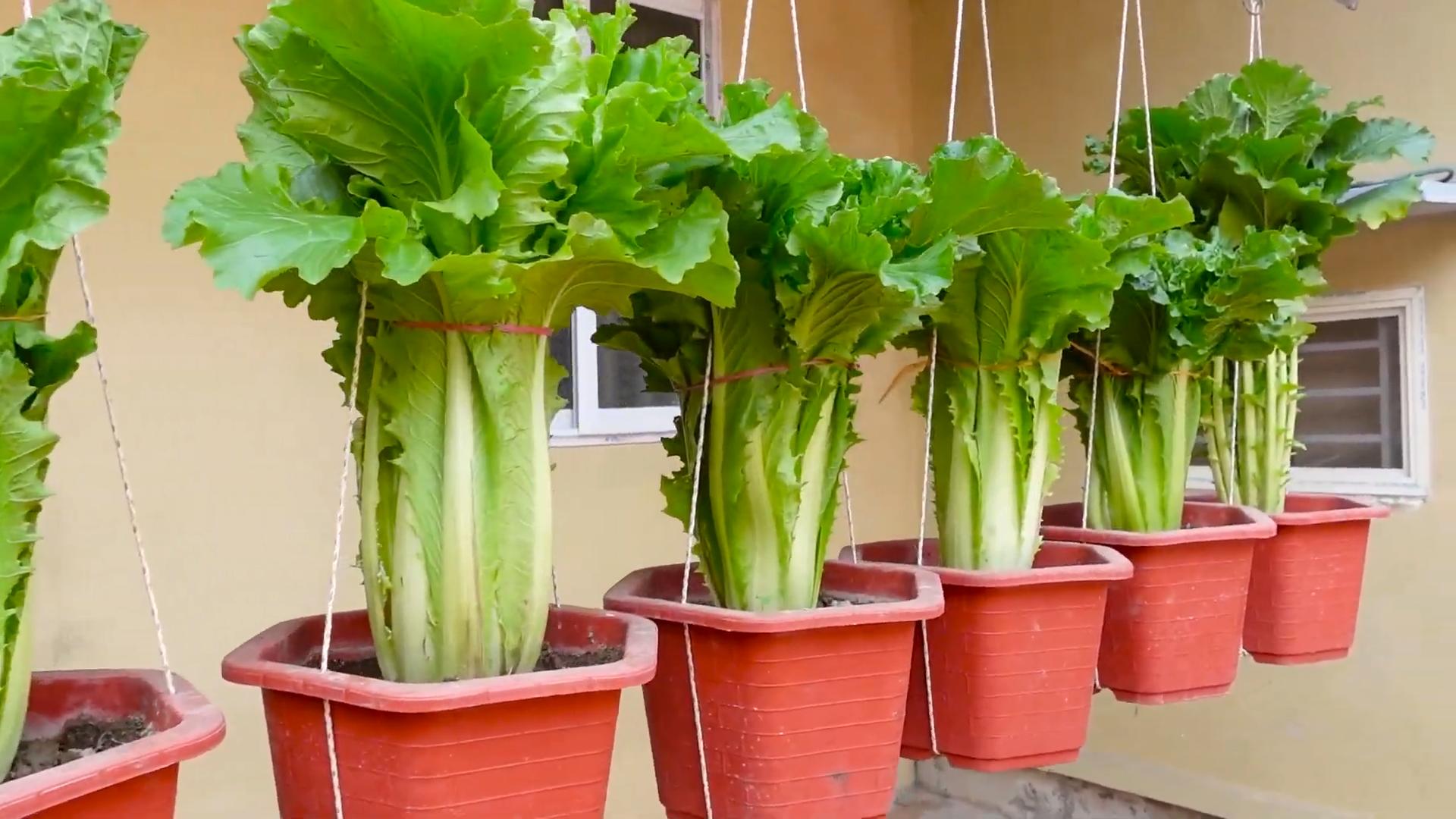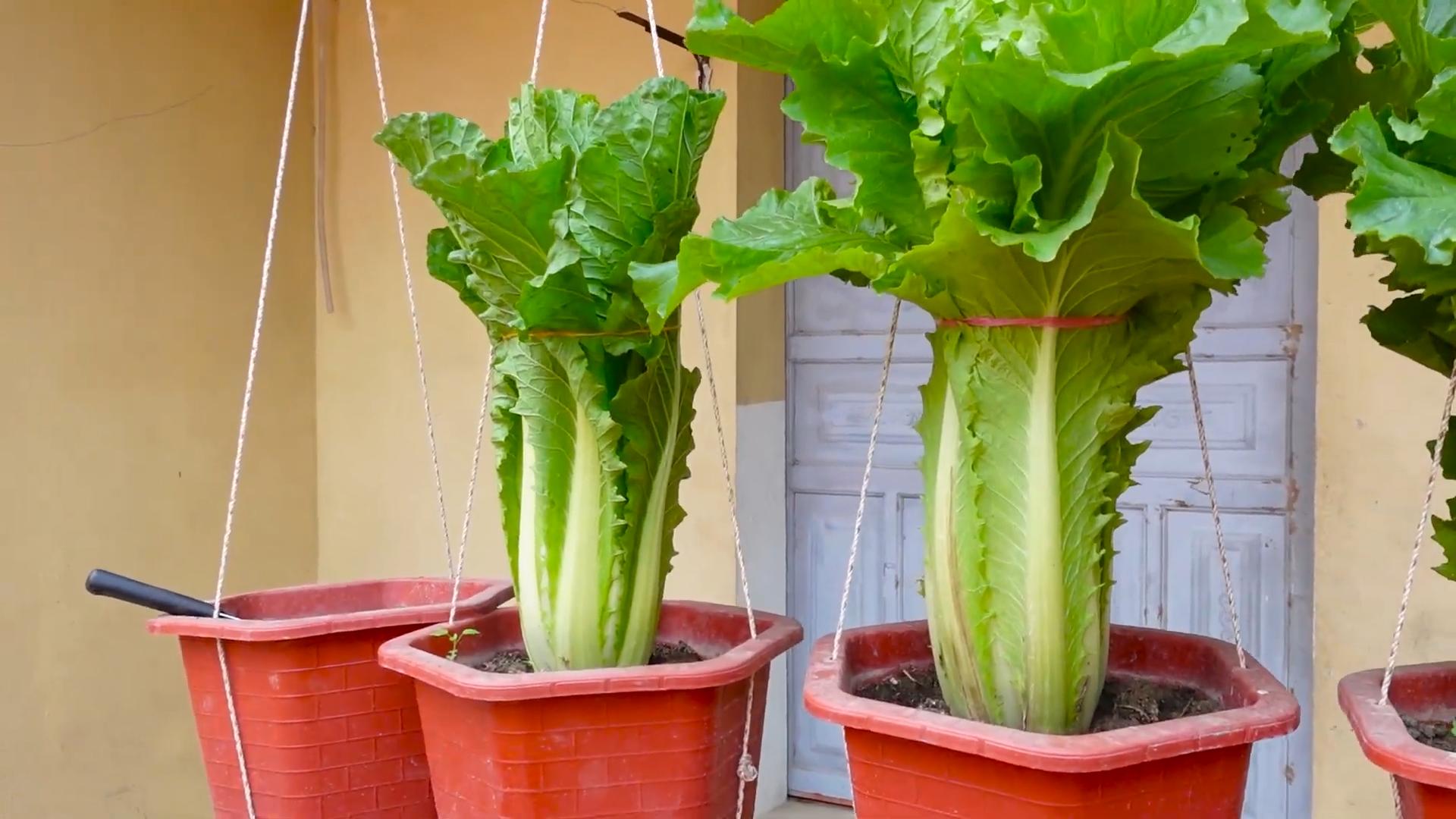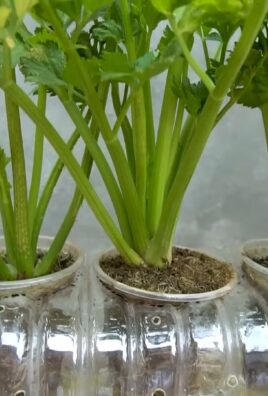Indoor Lettuce Growing: Imagine fresh, crisp lettuce gracing your salads, sandwiches, and wraps, all year round, without ever stepping foot outside! Forget those sad, wilted greens from the grocery store. This isn’t just a dream; it’s an achievable reality with a few simple DIY tricks. For centuries, humans have cultivated gardens, adapting to their environments and finding innovative ways to nourish themselves. From ancient Roman rooftop gardens to the ingenious vertical farms of modern cities, the desire to grow our own food is deeply ingrained in our history.
But why should you bother with indoor lettuce growing? Well, think about it: you control the environment, eliminating pests, diseases, and unpredictable weather. Plus, you’ll save money, reduce your carbon footprint, and experience the immense satisfaction of nurturing your own food from seed to table. I’m going to share some easy-to-follow DIY hacks that will transform even the smallest apartment into a thriving lettuce patch. Whether you’re a seasoned gardener or a complete beginner, these tips will empower you to enjoy delicious, homegrown lettuce whenever you crave it. Get ready to unleash your inner green thumb!

Grow Your Own Salad Indoors: A Beginner’s Guide to DIY Lettuce Gardening
Hey there, fellow plant enthusiasts! Ever dreamt of having fresh, crisp lettuce right at your fingertips, no matter the season? Well, dream no more! I’m going to walk you through a super easy and rewarding DIY project: growing lettuce indoors. Trust me, it’s simpler than you think, and the taste of homegrown lettuce is unbeatable.
What You’ll Need: The Essentials
Before we dive in, let’s gather our supplies. Don’t worry, you probably have a lot of this stuff lying around already!
* Lettuce Seeds: Choose your favorite varieties! Butterhead, romaine, loose-leaf – the possibilities are endless. I personally love a mix for variety in my salads.
* Growing Medium: You have a few options here. Seed starting mix is great for germination. Alternatively, you can use a soilless mix like coco coir or peat moss mixed with perlite or vermiculite. Avoid using garden soil, as it can be too heavy and may contain pests or diseases.
* Containers: Recycled plastic containers, seedling trays, or even repurposed yogurt cups work perfectly. Just make sure they have drainage holes! You can also use larger pots if you want to grow more lettuce at once.
* Grow Lights: This is crucial for indoor growing. Lettuce needs plenty of light to thrive. LED grow lights are energy-efficient and work wonders. Fluorescent lights can also work, but they need to be closer to the plants.
* Watering Can or Spray Bottle: For gentle watering.
* Spray Bottle: For misting seedlings.
* Optional: Seedling Heat Mat: This can speed up germination, especially in cooler climates.
* Optional: Liquid Fertilizer: A balanced liquid fertilizer will help your lettuce grow strong and healthy.
Step-by-Step: From Seed to Salad
Okay, let’s get our hands dirty! Here’s a detailed breakdown of the process:
1. Sowing the Seeds: Planting for Success
* Prepare Your Containers: Fill your chosen containers with your growing medium, leaving about an inch of space at the top. Gently pat down the soil to create a firm surface.
* Sow the Seeds: Sprinkle the lettuce seeds evenly over the surface of the soil. Lettuce seeds are tiny, so don’t overcrowd them. A good rule of thumb is to space them about ½ inch apart.
* Cover Lightly: Cover the seeds with a very thin layer of soil or vermiculite. Lettuce seeds need light to germinate, so don’t bury them too deep.
* Water Gently: Use a spray bottle to mist the soil thoroughly. You want the soil to be moist but not soggy.
* Create a Humid Environment: Cover the containers with a clear plastic lid or plastic wrap to create a humid environment. This will help the seeds germinate.
* Place in a Warm Location: Place the containers in a warm location, ideally between 60-70°F (15-21°C). A seedling heat mat can be helpful if your home is cooler.
2. Germination and Seedling Care: Nurturing Your Greens
* Monitor Germination: Lettuce seeds typically germinate within 7-14 days. Keep the soil consistently moist during this time.
* Remove the Cover: Once the seedlings emerge, remove the plastic lid or wrap.
* Introduce Light: Place the seedlings under your grow lights. Start with the lights about 4-6 inches above the seedlings and adjust as they grow.
* Water Regularly: Water the seedlings when the top inch of soil feels dry. Avoid overwatering, as this can lead to root rot.
* Thin the Seedlings: Once the seedlings have a few true leaves (the leaves that look like miniature lettuce leaves), thin them out so that they are about 2-3 inches apart. This will give them enough space to grow. Don’t throw away the thinned seedlings! You can transplant them to other containers or even add them to your salad for a microgreen boost.
3. Growing and Harvesting: Enjoying the Fruits (or Leaves!) of Your Labor
* Maintain Consistent Light: Provide your lettuce plants with 12-14 hours of light per day. This is crucial for healthy growth.
* Water Regularly: Keep the soil consistently moist, but not soggy. Water when the top inch of soil feels dry.
* Fertilize (Optional): If you want to give your lettuce plants an extra boost, you can fertilize them with a balanced liquid fertilizer every 2-3 weeks. Follow the instructions on the fertilizer label.
* Monitor for Pests: Keep an eye out for pests like aphids or spider mites. If you spot any, you can try spraying them with insecticidal soap or neem oil.
* Harvesting: You can start harvesting your lettuce when the leaves are about 4-6 inches long. There are two main ways to harvest lettuce:
* Cut-and-Come-Again: This is my preferred method. Simply cut off the outer leaves, leaving the inner leaves to continue growing. This allows you to harvest lettuce multiple times from the same plant.
* Harvest the Whole Head: If you prefer, you can harvest the entire head of lettuce at once. Simply cut the lettuce at the base of the stem.
Troubleshooting: Addressing Common Issues
Even with the best intentions, sometimes things don’t go exactly as planned. Here are a few common issues you might encounter and how to address them:
* Leggy Seedlings: This means your seedlings are stretching towards the light and becoming tall and weak. This is usually caused by insufficient light. Move the grow lights closer to the seedlings or provide more light.
* Yellowing Leaves: This can be caused by a variety of factors, including overwatering, underwatering, nutrient deficiencies, or pests. Check the soil moisture and adjust your watering accordingly. If you suspect a nutrient deficiency, try fertilizing with a balanced liquid fertilizer.
* Slow Growth: This can be caused by insufficient light, cool temperatures, or nutrient deficiencies. Make sure your lettuce plants are getting enough light and warmth. If you suspect a nutrient deficiency, try fertilizing with a balanced liquid fertilizer.
* Pests: Keep an eye out for pests like aphids or spider mites. If you spot any, you can try spraying them with insecticidal soap or neem oil.
Choosing the Right Lettuce Varieties for Indoor Growing
Not all lettuce varieties are created equal when it comes to indoor growing. Some varieties are better suited for container gardening and indoor conditions than others. Here are a few of my favorites:
* Butterhead Lettuce (e.g., Buttercrunch, Tom Thumb): These varieties are compact and easy to grow in containers. They have a mild, buttery flavor and a soft texture.
* Loose-Leaf Lettuce (e.g., Black Seeded Simpson, Red Sails): These varieties are also easy to grow in containers and can be harvested using the cut-and-come-again method. They come in a variety of colors and textures.
* Romaine Lettuce (e.g., Little Gem, Paris Island Cos): While romaine lettuce can be grown indoors, it may require a bit more space than other varieties. Choose a compact variety like Little Gem.
* Oakleaf Lettuce (e.g., Red Oakleaf, Green Oakleaf): These varieties have a distinctive oak leaf shape and a mild, nutty flavor. They are easy to grow in containers and can be harvested using the cut-and-come-again method.
Optimizing Your Indoor Lettuce Garden: Tips and Tricks
Want to take your indoor lettuce garden to the next level? Here are a few extra tips and tricks:
* Rotate Your Containers: Rotate your containers regularly to ensure that all sides of the plants receive equal light.
* Provide Good Air Circulation: Good air circulation will help prevent fungal diseases. You can use a small fan to circulate the air around your plants.
* Monitor the pH of Your Soil: Lettuce prefers a slightly acidic soil pH of around 6.0-6.5. You can test the pH of your soil using a soil testing kit.
* Succession Planting: To ensure a continuous supply of lettuce, sow new seeds every 2-3 weeks. This is called succession planting.
* Experiment with Different Varieties: Don’t be afraid to experiment with different lettuce varieties to find your favorites.
Enjoy Your Homegrown Lettuce!
And there you have it! Growing your own lettuce indoors is a fun, easy, and rewarding project. With a little bit of care and attention, you can enjoy fresh, delicious lettuce all year round. So, grab your seeds, get your hands dirty, and start growing! Happy gardening!

Conclusion
So, there you have it! Mastering the art of indoor lettuce growing is not only achievable but also incredibly rewarding. Forget those limp, overpriced greens from the grocery store. Imagine crisp, vibrant lettuce, bursting with flavor, harvested fresh from your own home, whenever you desire. This DIY trick empowers you to take control of your food source, reduce your carbon footprint, and enjoy the unparalleled satisfaction of nurturing life from seed to salad.
This isn’t just about saving money; it’s about experiencing the joy of gardening, even without a sprawling outdoor space. It’s about connecting with nature, learning about plant life, and adding a touch of green to your indoor environment. The process itself is therapeutic, offering a calming and fulfilling activity that can be enjoyed by individuals and families alike.
But the benefits don’t stop there. By growing your own lettuce indoors, you can ensure that it’s free from harmful pesticides and herbicides. You know exactly what goes into your food, giving you peace of mind and promoting a healthier lifestyle. Plus, the taste of freshly harvested lettuce is simply unmatched. It’s sweeter, crisper, and more flavorful than anything you can buy in a store.
Don’t be afraid to experiment with different varieties of lettuce. Try growing romaine for classic Caesar salads, butter lettuce for delicate wraps, or loose-leaf varieties for a mix of textures and flavors. You can also add other leafy greens like spinach, arugula, or kale to your indoor garden for even more variety. Consider using different types of grow lights to see which ones work best for your specific setup and lettuce varieties. Some people even incorporate hydroponic systems for even faster and more efficient growth.
We encourage you to embrace this DIY trick and embark on your own indoor lettuce growing adventure. It’s easier than you might think, and the rewards are well worth the effort. Start small, learn as you go, and don’t be discouraged by initial setbacks. Every gardener, even the most experienced, has faced challenges along the way. The key is to persevere, learn from your mistakes, and enjoy the process.
Once you’ve mastered the basics, consider expanding your indoor garden to include other herbs and vegetables. Imagine having a constant supply of fresh basil, mint, tomatoes, and peppers, all grown right in your own home. The possibilities are endless!
We’re confident that you’ll be amazed by the results. So, grab your seeds, gather your supplies, and get ready to experience the joy of growing your own lettuce indoors. And most importantly, don’t forget to share your experiences with us! We’d love to hear about your successes, your challenges, and any tips or tricks you’ve discovered along the way. Share your photos and stories on social media using [Your Hashtag Here], and let’s inspire others to embrace the wonderful world of indoor gardening. Happy growing!
Frequently Asked Questions (FAQ)
What are the best lettuce varieties to grow indoors?
The best lettuce varieties for indoor growing are typically those that are compact and fast-growing. Loose-leaf varieties like Black Seeded Simpson, Salad Bowl, and Red Sails are excellent choices because they can be harvested continuously as the leaves mature. Butterhead varieties like Buttercrunch and Tom Thumb are also well-suited for indoor growing due to their small size and tender leaves. Romaine lettuce can be grown indoors as well, but it may require a bit more space and light. Experiment with different varieties to see which ones thrive best in your specific indoor environment.
How much light does indoor lettuce need?
Lettuce requires a significant amount of light to grow properly indoors. Ideally, you should provide your lettuce plants with at least 12-14 hours of light per day. Natural sunlight is always a great option, but if you don’t have a sunny window, you’ll need to supplement with artificial grow lights. LED grow lights are a popular choice because they are energy-efficient and provide the full spectrum of light that plants need. Fluorescent grow lights can also be used, but they may not be as efficient as LEDs. Position your grow lights close enough to the plants to provide adequate light, but not so close that they burn the leaves.
What type of soil is best for growing lettuce indoors?
Lettuce prefers well-draining soil that is rich in organic matter. A good potting mix for indoor lettuce growing should contain a blend of peat moss, perlite, and vermiculite. You can also add compost or other organic amendments to improve the soil’s fertility and drainage. Avoid using garden soil, as it can be too heavy and may contain pests or diseases. Make sure your containers have drainage holes to prevent waterlogging, which can lead to root rot.
How often should I water my indoor lettuce plants?
Water your lettuce plants regularly, keeping the soil consistently moist but not soggy. The frequency of watering will depend on factors such as the temperature, humidity, and type of container you’re using. Check the soil moisture level daily by sticking your finger into the soil. If the top inch of soil feels dry, it’s time to water. Water deeply, allowing the water to drain out of the drainage holes. Avoid overwatering, as this can lead to root rot.
How do I harvest lettuce from my indoor garden?
Harvesting lettuce from your indoor garden is easy and rewarding. For loose-leaf varieties, you can simply snip off the outer leaves as they mature, leaving the inner leaves to continue growing. This is known as “cut-and-come-again” harvesting. For head lettuce varieties, you can harvest the entire head when it reaches the desired size. To harvest, simply cut the head off at the base of the plant.
What are some common problems with indoor lettuce growing and how can I prevent them?
Some common problems with indoor lettuce growing include pests, diseases, and nutrient deficiencies. To prevent pests, inspect your plants regularly for signs of infestation, such as aphids, spider mites, or whiteflies. If you find pests, you can try washing them off with a strong stream of water or using insecticidal soap. To prevent diseases, avoid overwatering and ensure good air circulation around your plants. If you notice any signs of disease, such as yellowing leaves or spots, remove the affected leaves immediately. To prevent nutrient deficiencies, fertilize your lettuce plants regularly with a balanced liquid fertilizer.
Can I grow lettuce indoors year-round?
Yes, you can absolutely grow lettuce indoors year-round! One of the biggest advantages of indoor gardening is that you can control the environment, providing your plants with the ideal conditions for growth regardless of the season. With proper lighting, temperature control, and watering, you can enjoy fresh lettuce from your indoor garden all year long.
What is the ideal temperature for growing lettuce indoors?
Lettuce prefers cool temperatures, ideally between 60-70°F (15-21°C). Avoid exposing your lettuce plants to temperatures above 80°F (27°C), as this can cause them to bolt (go to seed) and become bitter. If you’re growing lettuce indoors during the summer months, you may need to provide some shade or cooling to keep the temperature down.
How do I prevent my lettuce from bolting indoors?
Bolting is a common problem with lettuce, especially when it’s exposed to high temperatures or long days. To prevent bolting indoors, keep the temperature cool, provide adequate shade, and avoid overwatering. You can also choose bolt-resistant lettuce varieties, which are less likely to bolt in warm weather.
How do I fertilize my indoor lettuce plants?
Fertilize your indoor lettuce plants every 2-3 weeks with a balanced liquid fertilizer. Look for a fertilizer that is specifically formulated for leafy greens or vegetables. Follow the instructions on the fertilizer label carefully, and avoid over-fertilizing, as this can burn the roots. You can also add compost or other organic amendments to the soil to improve its fertility.





Leave a Comment